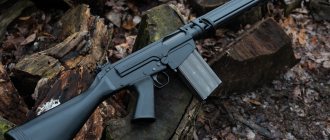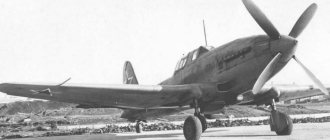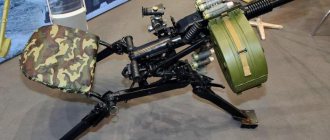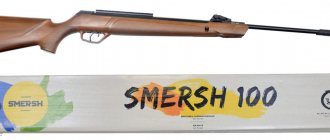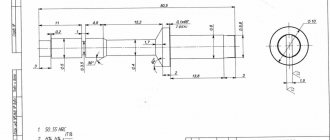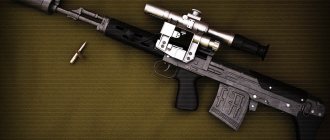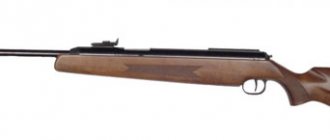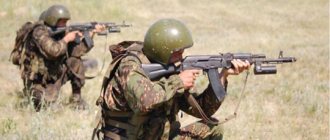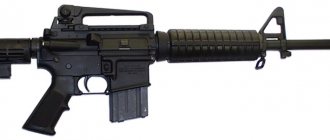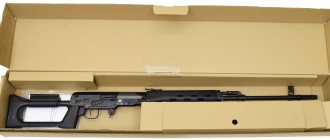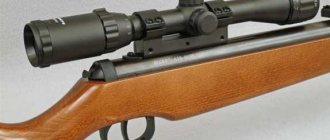From ecology to jazz
Over 25 thousand young Blagoveshchensk residents are involved in interest groups and receive additional education in creative and sports fields in specialized schools, the Center for Aesthetic Education of Children named after. V. V. Beloglazova. According to the city's education department, the municipal system of extracurricular activities covers 85 percent of children and young people aged 5 to 18 years. Only on the basis of city schools there are 508 associations - circles, clubs and sections, which are attended by over 15 thousand children.
— When choosing extracurricular activities, it is very important to decide whether the child just wants to actively spend his leisure time or is committed to serious, in-depth learning. In the second case, additional education can be obtained at art schools, music and art schools. The base that children are given in these institutions allows them to continue their studies in specialized secondary and higher educational institutions of the country,” notes Victoria Khopatko, head of the cultural department of the Blagoveshchensk administration.
According to Victoria Andreevna, some of these schools are now enrolling in early development groups. This gives children the opportunity to try their hand at one or another area of art in order to determine the correctness of their choice. “So, the art school in the village of Belogorye annually enrolls preschool children in the department of early aesthetic development. There is a children's art studio at the city art school. Invites children from four to five years old to the early development school and the Central Children's School of Arts,” Victoria Khopatko gives examples.
Year after year, the network of cultural and leisure institutions in Blagoveshchensk is expanding. Young Blagoveshchensk residents can realize their creative potential in forty creative formations. For example, the Social and Cultural Center and the City House of Culture offer children more than 15 activities: from a fine arts club or an environmental club to a rhythmic gymnastics section or a pop and jazz studio. In the near future, another after-hours association of the OKC will open on Kalinina, 82/2.
School shooting range
General educational institutions of Blagoveshchensk are involved in the development of the sports sphere of additional education. In connection with the introduction into schools of passing the standards of the All-Russian physical education and sports complex “Ready for Labor and Defense!” (GTO) the Amur capital began to pay great attention to organizing classes for schoolchildren in air rifle shooting. For example, the corresponding section already exists in school No. 26, where a real shooting range is equipped. At Lyceum No. 6, similar training is carried out in an electronic shooting range. “This shooting range is a special software with an electronic target and an electronic rifle with a laser sight, which quickly calculates all points. This safe and mobile base is already actively used for city competitions. In the future, it is necessary to equip similar shooting ranges in other educational institutions,” says Inna Bugera, head of the department of general and additional education of the Blagoveshchensk administration.
85
percent of young citizens are covered by the municipal system of extracurricular activities
Recently, as noted in the education department, badminton has become very popular among children. Therefore, corresponding sections also appear in schools. This sport was introduced in schools No. 13 and 26. Also, over the past three years, schoolchildren have actively taken up checkers, chess and darts. By the way, this academic year the standards for checkers are included in the “Presidential Sports Games” - all-Russian competitions for schoolchildren. “Since 2014, we have been trying to include as many technical clubs as possible into the additional education system. These include, for example, classes in shipbuilding and rocketry, aircraft modeling and computer graphics. In this regard, the Center for Aesthetic Education of Children named after. V.V. Beloglazov, which has similar associations,” noted the education department.
Classes for special children
The head of the department of general and additional education of the Blagoveshchensk administration also says that in the Amur capital they are successfully implementing programs in swimming, various team sports, wrestling, artistic and rhythmic gymnastics in sports schools. They don’t stop there - they train not only future champions, but also develop new directions. For example, at sports school No. 7 two years ago a ski training department was opened.
The system of additional education for children with disabilities is also expanding in Blagoveshchensk. “Special adaptive classes for preschool children were initially held at sports school No. 7. Last year, an entire center for inclusive additional education was opened at school No. 5. Here, children with disabilities can study with a physical education instructor, speech therapist and psychologist free of charge. At the moment, 21 children are studying there,” says Inna Aleksandrovna.
Plus 70 percent
— Pupils of the cultural sphere of Blagoveshchensk are rightfully one of the best both in the Far East and in Russia as a whole. Last year, our children’s achievements in competitions and festivals at the regional, Russian and international levels increased by 70 percent compared to 2014. Among the latest achievements are the gold medals of the “Childhood” choir, won at the World Choir Games in Sochi, the victory of students of the Art School in the interregional competition “My Picture”, high-level awards for participants of the theater studio “Etude” in the International festival-competition “Behind the Scenes of St. Petersburg” and many others, which speaks both to the development of the system of additional education and to the improvement of the level of the children themselves,” noted the city’s cultural department.
HELPFUL ADVICE
Maxim Chekmarev, psychotherapist, psychologist:
— Additional activities, of course, should be chosen primarily based on the child’s interests. The most important thing is that mom or dad don’t try to make their own unrealized dreams come true through him. A preschooler or primary school student should be given the opportunity to try himself in different areas so that he can understand what exactly his soul responds to. Fortunately, many sections and clubs now offer trial classes. Before making a final decision, a parent needs to realize what exactly prompted him to send his child to a particular section or institution of additional education - a stable interest noticed in his daughter or son, or simply an ability for a certain type of activity? Remember also that you should not immediately demand high results from the baby - let the child develop and learn to set priorities himself.
Nowadays, so-called early development schools are becoming increasingly popular. I think the idea itself is not a bad one. But it’s best to think about them at the end of the child’s first year. In the first years, the best educators are parents. The main thing is that, when enrolling your child in such a school, you do not think: after this, your child will be somehow better than other children. Early development should show him that learning is interesting. At the same time, his intellect should in no case be overloaded. It is important to choose a teaching method that harmoniously combines physical and verbal development. You also need to remember that the first seven years of a child’s life are not aimed at learning language or mathematical symbols, but, above all, at developing the senses and spheres of perception. At this time, it is more important to teach him basic household and hygiene skills. Therefore, we should not forget about these areas of socialization, completely focusing on the early development of the child in the areas of science.
It will traditionally be possible to enroll a child in a club, section or additional education institution September 1 at creative sites. They will be organized on the territory of the OKC and the city park.
Also, the necessary information about associations from the beginning of the school year will be available on the official website of the city education department: obrblag.info
or by phone 237-556.
Age category of materials: 18+
- Tatiana Dychko
- Amurskaya Pravda from 08/19/2016
Test procedure
Shooting is done from an air rifle or electronic weapon. Shots - 3 test, 5 test. Time to shoot - 10 minutes. Preparation time: 3 minutes.
Shooting from an air rifle (VP, type IZH-38, IZH-60, MP-512, IZH-32, MP-532, MLG, DIANA) is carried out from a sitting or standing position with elbows resting on a table or counter at a distance of 10 m ( 5 m for participants of the III stage of the complex) on target No. 8. The organizer provides weapons for performing the test.
Shooting from electronic weapons is carried out from a sitting or standing position with elbows resting on a table or stand at a distance of 10 m (5 m for participants of the III stage of the complex) at target No. 8.
The result is not counted:
- a shot was fired without the command of the sports judge;
- the weapon is loaded without the command of the sports judge.
Who created it, and how the weapon was designed
Retired Colonel Valentin Ivanovich Uglov, head of the museum of the Strategic Missile Forces Military Academy, wrote in his publication that in the 80s, at the Military Academy of the USSR Missile Forces, a group led by Professor V. S. Sulakvelidze was developing a laser pistol as part of the Almaz program. In addition to Sulakvelidze, the design team included four more scientists.
The caliber of the pistol created by military designers was 10 mm, the weight approximately corresponded to the mass of “ordinary” analogues of weapons of this class. Length - about 180 mm, firing mode - semi-automatic, the magazine could accommodate eight special capsules.
Setting up for shooting while sitting at a table
This exercise is the simplest and most convenient for initial training in bullet shooting. The shooter's body position is familiar, almost no tension is required, the stability of the rifle and hands is greatest, and loading the rifle is the most convenient.
The shooter sits at the table or stands near the counter, choosing the most comfortable position for himself. The whole body is slightly turned to the right of the aiming line. When shooting, it is recommended to lean your chest slightly against the edge of the table, but at the same time maintain a free posture with minimal muscle tension.
The rifle must be grasped with the right hand by the neck of the stock so that the thumb clasps the neck of the stock on the left, and the other four fingers on the right. With your left hand, grasp the stock fore-end from below so that your thumb clasps the left side of the fore-end, and the other four fingers clasp the fore-end from the right side. The rifle should rest not on your fingers, but on your palm. Then lean over the table and rest your elbows on the table or, if shooting is carried out standing near the counter, rest your elbows on the counter. In this case, the left elbow and shoulder should be pushed forward as far as possible, and the left elbow should be exactly under the rifle. The right elbow is placed on the side, closer to you. The rifle must be inserted with the butt plate into the notch of the right shoulder and pressed against it. Lower your head onto the ridge of the butt. The shooter places his legs in a way that suits him. The body position should be calm and stable.
Self-checking the accepted position consists of the fact that after accepting the position, the shooter closes his eyes for a few seconds, then opens them and checks the alignment of the rifle pointing and aiming points.
Rice. 1 Shooting position while sitting at a table with your elbows resting on the table. Rifle above the left elbow: a - side view; b - front view
If it turns out that the rifle’s front sight does not coincide with the aiming point, then it is necessary to clarify the aiming of the rifle, but without violating the “shooter-weapon” system, that is, without moving the rifle relative to the shooter’s body.
If the aiming point of rifle 4 (Fig. 2) is on the side of aiming point 6, then you need to rotate the entire body along with the rifle around the vertical axis 2, passing through the fulcrum of the left elbow, until the aiming point of rifle 4 aligns with aiming point 6.
Rice. 2. Clarification of the rifle's horizontal aiming when shooting while sitting at a table: 1 - direction of rotation of the shooter's body; 2 — axis of rotation of the gunner’s body; 3 - aiming line until the rifle aiming is clarified; 4 - rifle aiming point until aiming is specified; 5 - the bull's eye of the target was on the right; 6—combined pointing and aiming points; 7 — location of the sight after clarifying the aiming of the rifle; 8 - aiming line after clarifying the rifle aiming
If the aiming point of the rifle 6 (Fig. 3) turns out to be lower (higher) than the aiming point 4, then you need to move a little away (move) with a chair from the table or stand a little further (closer) from the counter, but without moving your elbows 8.
Rice. 3. Clarification of the rifle's vertical aiming when shooting while sitting at a table: 1 - direction of movement of the shooter's body; 2 - aiming line after clarifying the rifle aiming; 3 — location of the sight after clarifying the aiming of the rifle; 4 — combined pointing and aiming points; 5 - the bull's eye of the target - turned out to be higher; 6 - rifle aiming point before clarification: 7 - aiming line before rifle aiming is clarified; 8 - elbows and arrows should be motionless
Accurate shooting is only possible if the rifle is applied uniformly for all shots of the exercise being performed.
The placement of the stock in the shoulder notch is also important. If the butt of the rifle is higher than the middle of the shoulder notch, then the recoil force increases due to the increase in the distance between the pair of forces: the recoil of the rifle and the resistance of the shoulder, and then the bullets will hit above the center of the target. If the butt of the rifle is below the shoulder notch, the bullets will hit below the center of the target.
From this it is clear that even with minor changes in the position of the butt in the shoulder recess, a large vertical dispersion of bullets will result.
After attaching the rifle, the index finger must be placed with the first joint on the trigger. In this case, the index finger should not touch the rifle stock. Lower the elbow of your right hand freely onto the table (stand). Tilt your head slightly forward and rest your cheek against the ridge of the butt.
Touching the cheek in the same place on the butt ridge for all shots will ensure good shooting accuracy. To uniformly touch the cheek to the ridge of the butt, it is recommended to touch the tip of the nose with the thumb of the right hand, grasping the neck of the butt.
Then you need to make sure that the position of the body and arms is comfortable and that no muscles are overly tense.
Aiming
Correct aiming is the most important element of shooting accuracy. Aiming (Fig. 4) consists of two elements: setting (adjusting) the sighting device at a given distance and aiming the rifle at the target using the sighting device.
Rice. 4. Aiming scheme when exceeding the average aiming point 1 - the middle of the sight slot: 2 - the upper edge of the front sight; 3 — aiming line; 4 - average trajectory of bullets; 5 - midpoint of impact - center of the target; 6 - target; 7 — aiming point; 8 — rifle barrel
The sight is installed at a given distance separately in the vertical and horizontal planes. In air rifles IZH-38 (IZH-22) this is achieved by adjusting the height of the sight with the power of the sight screw and changing the position of the base of the sight in the transverse groove of the breech of the barrel.
The air rifle sight is installed in advance, while the rifle is being brought into normal combat at a given shooting distance.
It is recommended that aiming be divided into two stages: preliminary and main. The preliminary stage, which takes up more than half of the total aiming time, should be used to check the correctness of the preparation. The main stage is used to more accurately aim the rifle and prepare to pull the trigger. This gradual aiming will reduce fatigue of the visual system and increase shooting accuracy. Each shot should be fired as quickly as possible, and the pauses between shots should be long enough to give the eyes time to rest.
Various types of sights are used for small arms: open, diopter with a rectangular or ring front sight, optical. IZH-38 (IZH-22) rifles have open sights.
Determination of the dominant eye.
Aiming is carried out with one eye, which is called the leading eye. Most shooters aim with their right eye, i.e. the right eye is the dominant eye. But there are also exceptions. Various methods are used to determine the shooter's dominant eye. The simplest method is as follows. In a sheet of paper measuring 20x20 cm, you need to cut a round hole with a diameter of 3 cm. Then, taking the sheet of paper in your outstretched hand, point the hole at a target mounted on a light background. Next, closing your right and left eyes alternately, watch the target. If the target is visible when the left eye is closed, but the target disappears when the right eye is closed, then the shooter's dominant eye is the right eye.
If it turns out that the shooter’s dominant eye is the left eye, then when shooting it is necessary to cover the right eye with a matte shield mounted on the head.
Previously, it was believed that when aiming, one should look with only one dominant eye, and the non-dominant eye should be closed. However, research by many masters of bullet shooting has practically proven that closing the non-dominant eye reduces visual acuity, and therefore the result of shooting. Therefore, it is recommended to look with both eyes when shooting. If this is difficult, the non-dominant eye can be covered with a narrow vertical strip of white paper or plastic so that the target for the non-dominant eye is covered.
Aiming with open sights.
To aim, you need to look with your dominant eye through the middle of the slot of the aiming bar at the upper edge of the front sight so that it is exactly in the middle of the slot and level with its upper side edges. This position is called "flat front sight". Then, maintaining this position of the eye, sight and front sight, bring the upper edge of the front sight under the bottom of the black circle - the “bull’s-eye” of the target with a small gap, i.e., at the aiming point. Try to keep these four elements: the eye, the front sight and the lower edge of the bull's eye on the same line. Do not be embarrassed that there will be deviations of the rifle due to vibrations of the shooter’s entire body in different directions from the aiming point (Fig. 5). Especially large deviations occur among novice shooters. Gradually, as a result of training, these deviations will become smaller and smaller, i.e. shooting will become more accurate. This will happen when the shooter learns to uniformly place his cheek against the ridge of the butt for all shots.
Fig. 5 Oscillations of the rifle aiming point around the aiming point 1 - target; 2 — “bullseye” of the target; 3— aiming point; 4 – hesitation on the part of the shooting master; 5 - hesitation in an experienced shooter; 6 - hesitation in a novice shooter
If, while aiming, the shooter kept the front sight level, and the rifle at the moment of the shot deviated and was not aimed at the aiming point, under the black circle, but, for example, 5 mm in any direction, then the hit will be 5 mm in the same direction. side. This is a parallel weapon offset error.
If the shooter does not keep the front sight level, the resulting angular error will be more significant. For example, when the front sight deviates from the middle of the slot by only 1 mm, the hole will be deviated from the center of the target by 23.4 mm.
Thus, the largest deviations are obtained from an uneven front sight, i.e., from angular errors in the deflection of the rifle. During aiming, the shooter's organ of vision works with great tension and fatigue accumulates in the muscles of the lens of the eye. Therefore, you should not alternately focus your eye many times at different distances: now at the sight, now at the front sight, now at the target. In addition, we must remember that our vision has the property of inertia, that is, when we move the focus of the eye from the target to the front sight and already see it, our vision still retains the same imprint of the target, and not its actual position. But during this time the rifle may already deviate from its previous position.
The difficulty of aiming lies in the fact that the nature of our vision does not make it possible to clearly see at once all three aiming elements we need, located at different distances from the eye. Only one element can be seen clearly, and the remaining two will be blurry or, as they say, will have a “crown”. A significant question arises: which of the aiming elements is more important to see clearly? Practice has proven that the best result will be obtained if there is a clear vision of the front sight (Fig. 6).
Rice. 6. Correct vision of aiming elements when shooting with open sights: 1 - “crown” of the upper edge of the aiming bar; 2 — “bullseye” of the target; 3— “crown” “bull’s-eye” of the target; 4 - clear front sight
Placing a clear front sight in the middle of the rib slot is easy to achieve, since the fuzziness of the edges of the slot is the same on both sides of the front sight. But it is very difficult to place the front sight in height, since there is no clear boundary between the upper protrusions of the aiming bar and the bull’s eye; they have “crowns” 1 and 3. Shooting practice has proven that it is necessary to align the front sight only along the solid line of the upper protrusions of the aiming bar and do not pay attention to the blurry part - the “crown” of the 1st sighting bar.
Intense and systematic work of the eyes during shooting gives excellent results in increasing visual acuity. For example, according to the Lviv Institute of Physical Culture, the visual acuity of shooters increases depending on the experience of shooting as follows: for shooters with up to 2 years of shooting experience - up to 1.4 diopters; for shooters with up to 10 years of shooting experience - up to 1.6 diopters; for shooting masters - up to 1.7... 1.8 diopters.
Typical mistakes of shooters.
A very harmful mistake is stalling the rifle (type d), i.e., during aiming, the front sight is correctly installed in relation to the sight and the aiming point, but with some tilt of the entire rifle in one direction. Beginner shooters mostly tilt their rifle to the right.
Manufacture error - stalling of the rifle must be eliminated at the very beginning of shooting training, since the shooter can get used to holding the rifle at an angle. It will be very difficult to relearn later. With a monotonous stall, there will be a good grouping of hits, but it will be very difficult to make an adjustment, i.e., determine where to place the aiming point. For example, if the STP is below the center of the target and the shooter takes the aiming point higher, then if the stall was to the right, the holes will be not only higher, but also to the right.
Rice. 7. Aiming errors when shooting with open sights: a - correct aiming; b - “small” front sight - bullets will hit lower; c - “large” front sight - bullets will hit above the target; d - the rifle is “dumped” to the right - the bullets will hit lower to the right; d - front sight to the left of the center of the sight slot - bullets will hit to the left of the target; e - the front sight is to the right of the center of the sight slot - the bullets will hit to the right of the target; g - large “clearance” - bullets will hit below the target; h - front sight in the bull's eye - bullets will hit above the target
Trajectory
Bullets fly along a parabolic trajectory. It starts below the aiming line, rises above it and crosses the line again as the bullet descends.
Simply put, it is the path your bullet takes towards its target. Objects flying in the atmosphere are affected by the force of gravity and the force of air resistance. Gravity pulls the bullet down, and air resistance constantly slows it down. This loss of speed, coupled with the effects of gravity, causes the bullet to descend faster and faster, resulting in a parabolic bullet trajectory. Simple smartphone or computer apps, given the right inputs, can calculate the trajectory with amazing accuracy, allowing the shooter to make adjustments and ultimately hit the target.
Speed
When it comes to hunting, the critical parameter is the speed of the bullet. A bullet in flight constantly loses speed, and, consequently, energy.
When a bullet leaves the muzzle of the barrel, it does so at a certain speed, called "muzzle velocity" (or "barrel exit velocity"). Due to the effects of air resistance, the bullet immediately begins to slow down, its flight speed constantly drops, and at the end of the flight the bullet stops and its curved trajectory ends in the ground. Flight speed is a major contributor to how much energy a bullet transfers to its target, and since the bullet's speed is constantly decreasing, its energy will also decrease. When hunting, flight speed also affects one more parameter - the reliability of bullet expansion. Without expansion, the bullet punches a small hole in the target, which will kill the animal much more slowly, which is inhumane and unprofessional.
Knowing the specific muzzle velocity of your chosen cartridge in your rifle is also important for correctly calculating the bullet's trajectory. Although manufacturers indicate fairly accurate muzzle velocity values on the packaging, nothing can replace a real measurement of the speed of a bullet fired from your rifle, which can easily be done using a high-quality device.
